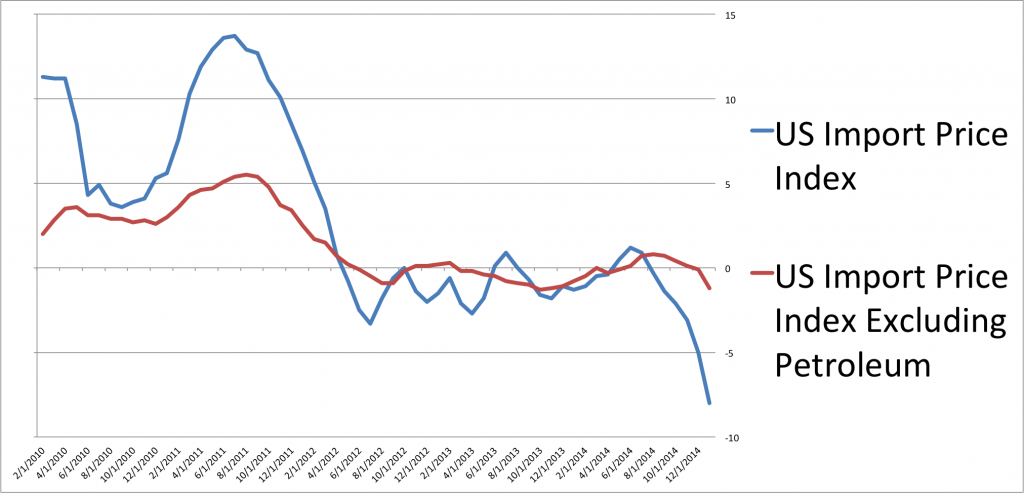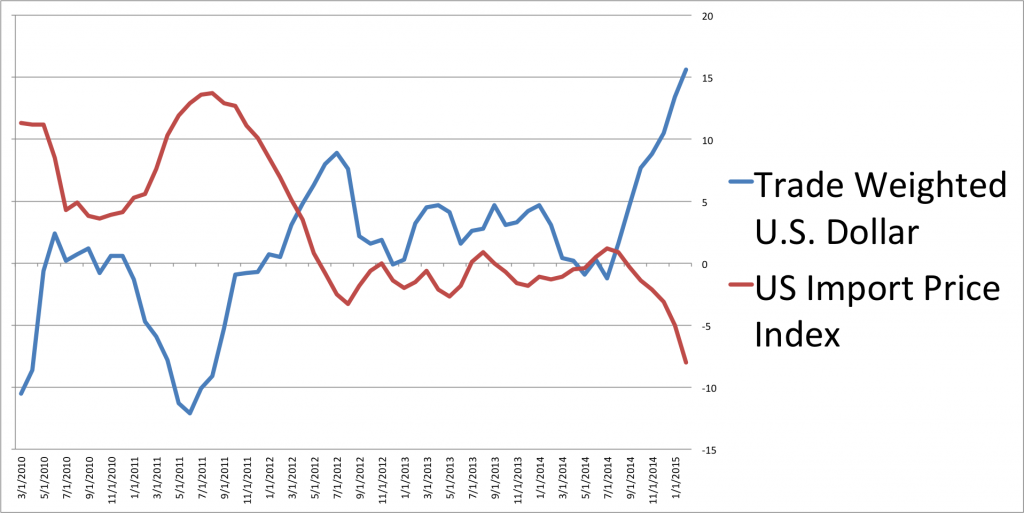By Lucy Ren
U.S. import prices in January declined by the greatest amount since December 2008, driven by plunging fuel prices and the strengthening of the U.S. dollar.
Import prices fell 2.8 percent from December, missing the economists’ forecast average of a 3.1 percent drop compiled by Bloomberg.

As a major importer of oil, the U.S. saw its fuel prices fall 16.9 percent in January following a decline of 11.3 percent in the prior month. The January decrease in fuel prices was the largest monthly drop since a 22.2 percent decline in December 2008.
Prices for nonfuel imports fell 0.7 percent in January after a 0.1 percent decline in December. The January index was at the same level as in January 2009, marking the largest one-month decreases since the 1.1 percent drop in December 2008. Nonfuel imports decreased 0.9 percent for the year ended in January, down from the 1.1 percent decline in the prior year.
According to Guy Lebas, chief fixed-income strategist at Janney Montgomery Scott LLC, the strengthening of the U.S. dollar “does not play an obvious role in a single-month result for import prices,” but over time, a rising dollar makes imports “look cheaper and drives down import prices.” He said the U.S. economy is really “importing deflation from many of our trading partners.”
For the month of January, prices of imports from China fell 0.3 percent, after recording no change in the previous four months. Prices of imports from Japan, Canada, the European Union and Mexico also decreased.

Regarding the implications of the stronger dollar for monetary policy, Lebas said his firm estimates that “a 5 to 7 percent rise in the dollar triggers about 0.3 percent worth of lower inflation, and that is actually equivalent to roughly a 50-basis-point Fed rate cut.”
Last month, Fed officials signaled that they would not raise the benchmark interest rate before this summer. Mark Witte, associate professor of economics at Northwestern University, opined that “there is no sign of much danger” in raising the rate.
“Going from an incredibly low interest rate to a low interest rate probably has little effect on the economy,” Witte added. “So I think the Fed might go to a slightly higher interest rate to silence its critics and then stay there for a long time.”
The previous largest one-month decline in import prices was 4.6 percent in December 2008.


